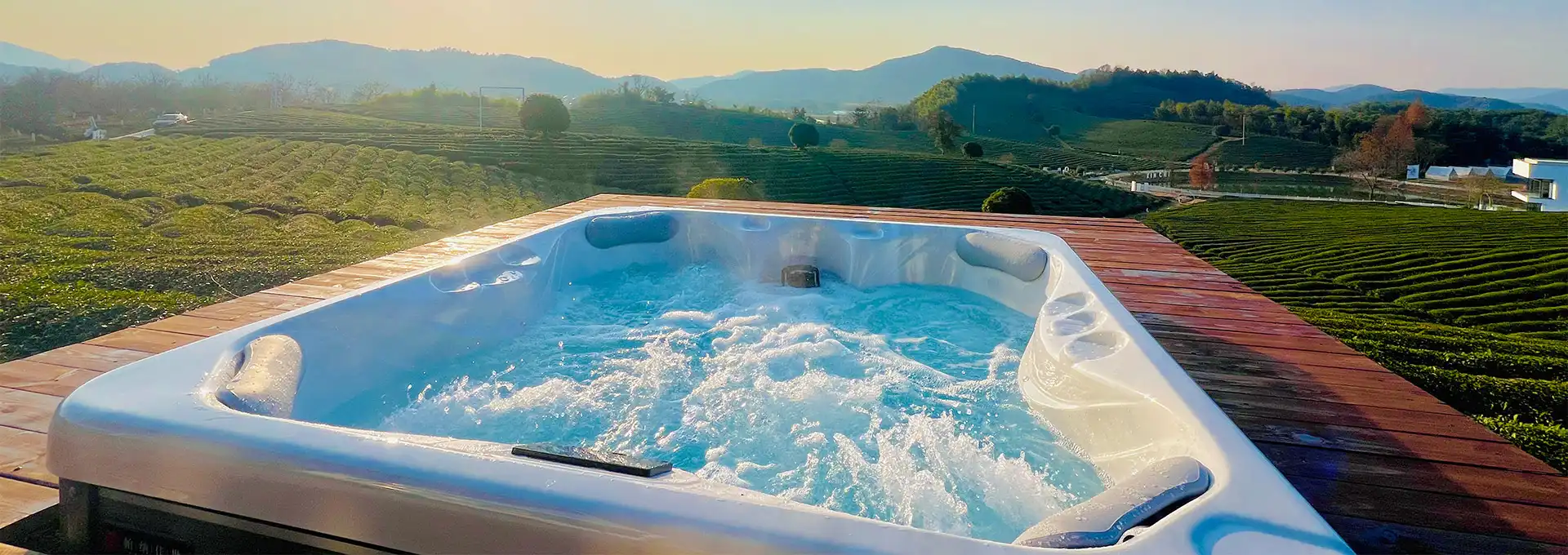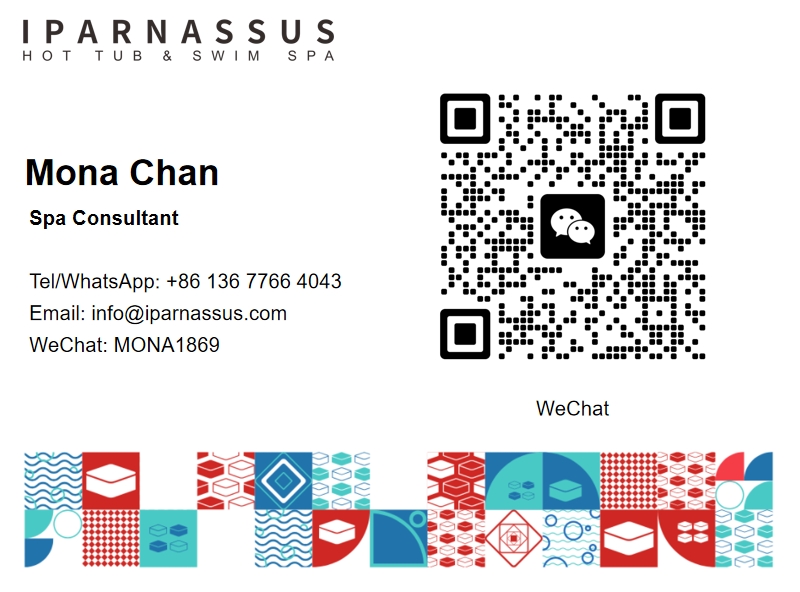What does shocking a hot tub do?
2025-07-02 22:10:07
Shocking a hot tub is an essential maintenance practice that involves adding a concentrated dose of chlorine or non-chlorine oxidizer to rapidly sanitize and refresh your spa water. This process eliminates contaminants, bacteria, and organic compounds that regular sanitization might miss, ensuring your hot tub remains clean, safe, and enjoyable for every soak. Understanding when and how to shock your hot tub is crucial for maintaining optimal water quality and extending the life of your spa equipment.
How Often Should You Shock Your Hot Tub?
Regular Maintenance Schedule
Most hot tub experts recommend shocking your spa weekly as part of routine maintenance. This frequency ensures that organic contaminants, body oils, and cosmetic residues don't accumulate to problematic levels. Regular shocking prevents the buildup of chloramines, which cause that unpleasant chlorine smell and can irritate skin and eyes. A consistent weekly schedule helps maintain crystal-clear water and reduces the need for more intensive treatments. Your hot tub's usage frequency, bather load, and environmental factors like rainfall or debris should influence your shocking schedule.
After Heavy Usage
Following parties, gatherings, or extended soaking sessions, your hot tub requires immediate shocking to handle the increased contaminant load. Multiple bathers introduce body oils, lotions, deodorants, and organic matter that overwhelm regular sanitizer levels. Heavy usage depletes chlorine faster and creates ideal conditions for bacteria growth. Shocking after these events restores proper sanitization levels and prevents water cloudiness or odors from developing. This reactive approach complements your regular maintenance routine and ensures water quality remains consistently high.
Environmental Factors
Weather conditions and environmental elements significantly impact when you should shock your hot tub. Heavy rainfall dilutes sanitizer levels and introduces contaminants, necessitating immediate shocking. High temperatures accelerate chemical reactions and bacterial growth, requiring more frequent treatments during summer months. Windstorms, falling leaves, or nearby construction dust can contaminate your spa water overnight. Monitoring these environmental factors helps you determine when additional shocking is necessary beyond your regular schedule, maintaining optimal water conditions year-round.
What Chemicals Do You Use to Shock a Hot Tub?
Chlorine-Based Shock
Sodium dichlor and calcium hypochlorite are popular chlorine-based shock treatments for hot tubs. Sodium dichlor dissolves quickly and won't significantly raise pH levels, making it ideal for regular shocking routines. This stabilized chlorine contains cyanuric acid, which protects against UV degradation but can accumulate over time. Calcium hypochlorite provides powerful oxidation but raises pH and calcium hardness levels, requiring careful water balance monitoring. Both options effectively eliminate bacteria, algae, and organic contaminants while restoring free chlorine levels to proper ranges.
Non-Chlorine Shock
Potassium monopersulfate offers an excellent non-chlorine alternative for hot tub shocking. This oxygen-based oxidizer eliminates organic contaminants without adding chlorine to your water, making it perfect for those sensitive to chlorine or maintaining bromine-sanitized spas. Non-chlorine shock works quickly, allowing hot tub use within 15-20 minutes after treatment. It effectively breaks down chloramines and organic waste while preserving existing sanitizer levels. This option provides flexibility for frequent shocking without over-chlorinating your spa water or affecting pH balance significantly.
Choosing the Right Option
Selecting between chlorine and non-chlorine shock depends on your hot tub's current sanitization system and personal preferences. Chlorine-shocked spas benefit from matching sanitizer types, while bromine systems work well with non-chlorine oxidizers. Consider your family's sensitivity to chemicals, usage patterns, and maintenance preferences. Non-chlorine shock allows more immediate hot tub use but may cost slightly more than chlorine alternatives. Evaluate your specific situation, water testing results, and manufacturer recommendations to determine the most suitable shocking agent for your hot tub maintenance routine.
Why Does My Hot Tub Water Turn Cloudy After Shocking?
Dead Organic Matter
Shocking effectively kills bacteria, algae, and other microorganisms in your hot tub water, but these dead particles remain suspended until proper filtration removes them. The oxidation process breaks down organic compounds into smaller particles that create temporary cloudiness. This cloudiness indicates your shock treatment is working correctly, eliminating contaminants that were previously invisible. The dead organic matter will gradually clear as your filtration system cycles water and captures these particles. Running your hot tub's circulation system continuously for 24-48 hours after shocking accelerates this clearing process.
Chemical Imbalance
Improper water chemistry can cause cloudiness after shocking your hot tub. High pH levels reduce sanitizer effectiveness and can precipitate calcium compounds, creating milky water appearance. Low total alkalinity leads to pH fluctuations and chemical instability. Adding too much shock at once can overwhelm your water's buffering capacity, causing temporary imbalances. Testing and adjusting pH, alkalinity, and calcium hardness before shocking prevents most chemistry-related cloudiness issues. Maintaining proper water balance ensures shock treatments work efficiently without creating secondary problems.
Filtration Issues
Inadequate filtration contributes significantly to post-shock cloudiness in hot tubs. Dirty, clogged, or worn filter cartridges cannot effectively remove the particles created during the shocking process. Old filters may allow fine particles to pass through, maintaining cloudiness despite proper chemical treatment. Insufficient circulation time prevents complete water turnover, leaving dead organic matter suspended. Regular filter cleaning, rotation, and replacement ensure optimal performance during and after shock treatments. Upgrading to higher-quality filters or adding supplementary filtration can improve clarity and reduce post-shock cloudiness duration.
Conclusion
Shocking your hot tub serves as a vital maintenance practice that ensures safe, clean, and enjoyable spa experiences. Regular shocking eliminates harmful contaminants, prevents bacterial growth, and maintains optimal water quality through proper chemical oxidation. Understanding the appropriate frequency, chemical selection, and potential side effects helps hot tub owners maintain their investment effectively and safely.
Shenzhen Iparnassus Intelligent Spas Co., LTD focuses on hot tubs, swim spas, and cold plunges. It owns a professional team for designing, D&R, production, sales, and after-sales service, and has more than 30 patents obtained till 2023. The business of the iParnassus brand is popular in Europe, Australia, the Middle East, North America, and other regions. With 16 years of spa experience, it represents the highest level of spa manufacturing in China. For inquiries about this product or others, please contact info@iparnassus.com for dedicated service.
References
1. Taylor, M.J. (2022). "Hot Tub Water Chemistry: Oxidation and Sanitization Principles." Journal of Pool and Spa Technology, 45(3), 128-142.
2. Johnson, R.K. & Smith, A.L. (2021). "Comparative Analysis of Chlorine vs. Non-Chlorine Shock Treatments in Residential Spas." Aquatic Facility Management Review, 38(7), 89-103.
3. Chen, L.W. (2023). "Environmental Factors Affecting Hot Tub Maintenance Schedules." International Spa and Pool Association Quarterly, 29(2), 67-81.
4. Martinez, C.R. (2022). "Understanding Cloudiness in Hot Tub Water: Causes and Solutions." Water Quality Management Today, 51(4), 234-248.
5. Anderson, P.T. & Williams, K.M. (2021). "Filtration Efficiency and Chemical Treatment Interactions in Spa Systems." Pool and Spa Engineering Journal, 42(6), 156-171.
6. Thompson, D.S. (2023). "Optimal Shock Treatment Frequencies for Residential Hot Tub Maintenance." Spa Industry Technical Review, 33(1), 45-59.



